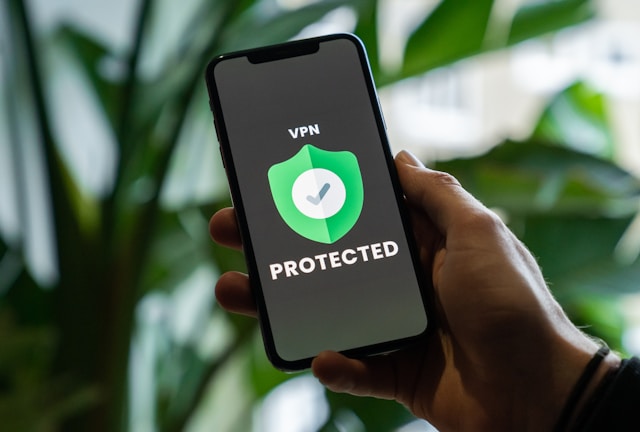Do you want to drive more foot traffic to your local store or ensure that you occupy every seat at your event? Then you’ll need to take advantage of location based marketing, and we’ll share the benefits to help you see why it’s worthwhile.
We’ll also provide some of the top examples of location based marketing to deliver context. This ensures that you can better imagine how this type of marketing can be an asset to your business.
Keep reading to learn how location-based marketing works and why it can blow your competition out of the water!

Table of Contents
What Is Location Based Marketing?
Location-based marketing is a strategic approach that uses a consumer’s physical location to deliver tailored marketing messages and promotions. This method leverages various technologies to pinpoint a user’s physical location.
The next step is to provide relevant content based on their proximity to a business, event, or area of interest. Keep this in mind when learning what is location based marketing.
There are several technologies that can potentially pinpoint a user’s location, which are as follows:
- Beacon technology: Beacons are small devices that use Bluetooth to detect nearby smartphones. They can send hyper-localized messages to users, which enhances in-store experiences by providing relevant information or offers.
- GPS and Wi-Fi: You can use GPS and Wi-Fi to determine a user’s location. GPS provides precise outdoor positioning, while Wi-Fi is useful for indoor settings where GPS signals may be weak.
- Cell towers: It’s possible for the triangulation of mobile devices with the use of three cell towers. This technology is a good alternative to GPs when it’s not available, but the geolocation accuracy is lower.
- IP address: You can track the IP addresses of your target customer and get their geolocation data.

5 Benefits of Location Based Marketing
Now let’s explore the benefits of location based marketing so that you can understand why it’s worth making the investment. You’ll see there are five reasons why it’s a no-brainer.
1. Higher Conversion Rates
Targeted location-based campaigns tend to have higher conversion rates because the offers and messages are more relevant.
However, you’ll still need to research the target customers to ensure you craft relevant messages, and this takes practice.
When consumers receive promotions while they are in the vicinity of a store or ready to make a purchase, they are more likely to act on them.
For instance, a retailer can send location based push notifications about a flash sale to users in the mall. Consequently, they may decide to act upon the sale and visit the store.
2. Customers Enjoy a Better Experience
Providing location-specific information and offers enhances the overall customer experience. That’s because users appreciate receiving useful and timely information. Top examples of these include the location of the nearest store, product availability, or event details.
This convenience reduces the effort required for decision-making and improves the shopping or visiting experience.
For example, a navigation app can guide users to the closest gas station when they’re running low on fuel, which provides a helpful service.

3. Strengthened Brand Loyalty
Consistently providing relevant offers and information helps build stronger relationships with customers. For instance, when users receive useful and context-aware content, they are more likely to develop a positive perception of the brand and remain loyal over time.
Here are some top ideas for your marketing teams to improve brand loyalty through location-based marketing messages:
- Send location-specific promotions: Offer promotions and discounts tailored to customers in specific regions. For instance, provide special deals to customers near your physical store to encourage visits.
- Incorporate local events: Engage with customers by connecting your brand to local events and happenings. This shows that you are in touch with the local community. For instance, you can sponsor or participate in local events and send out notifications about your involvement.
- Run localized loyalty programs: Design loyalty programs that reward customers for visiting and making purchases at specific locations. For example, offer points, discounts, or exclusive benefits for frequent visits or for checking in at your store.
- Engage with local culture: Incorporate local culture, traditions, and language into your marketing messages. This shows that your brand respects and values the local community and will foster a deeper emotional connection with your customers.
- Encourage local reviews and testimonials: Prompt satisfied customers to leave reviews or testimonials about their experiences. Make sure to highlight these positive reviews in your marketing messages to build trust and loyalty among local customers.
4. Good Value for Money
Location-based advertising enables businesses to optimize their marketing spend by focusing efforts on specific geographic areas. In fact, you can use marketing software and analytics to figure out what local areas yield the biggest returns. Likewise, you can eliminate the locations that are not worth targeting due to low interest and a lack of conversions.
This targeted approach reduces wasted budget on broad, untargeted campaigns and increases the efficiency of marketing resources. For example, a local cafe can promote its daily specials to nearby office workers, which maximizes impact without broad advertising expenses.
5. Real-Time Analytics
Utilizing location-based marketing provides access to real-time data and insights into consumer behavior and movement patterns. This information helps businesses understand customer preferences, peak times, and popular locations.
As a result, you’ll have the right data to inform your decision-making. Hence, it will help you make strategy adjustments that have a higher chance of success. The drawback is that it can take a lot of work to analyze analytics and make corrections to improve marketing strategies. This means it’s best to use marketing software that incorporates AI-based suggestions.

Top Location Based Marketing Examples of Things To Avoid
To ensure you hit the ground running with location-based marketing, you’ll need to avoid a few common mistakes. This ensures that you don’t waste time and money on strategies that will not target the types of locations you need.
Here are the top location based marketing examples to avoid:
- Intrusive notifications: Avoid bombarding users with too many notifications as they enter or leave a geofenced area. That’s because it can lead to annoyance and push users to disable location services or opt out of your notifications. Instead, limit the frequency of messages and ensure they offer clear value.
- Irrelevant offers: Sending irrelevant or generic offers based on location can result in a negative user experience. Therefore, ensure the promotions and messages match user interests and needs. This will be based on their behavior and preferences and not just their physical location.
- Outdated or incorrect location data: Using outdated or inaccurate location data can lead to sending users to the wrong place or providing them with irrelevant information. Therefore, regularly update your location databases and verify the data accuracy to maintain credibility and effectiveness.
- Overly aggressive tactics: Avoid using proximity marketing solely for hard selling. That’s because aggressive sales tactics can deter potential customers. Instead, focus on providing value and enhancing the user experience with helpful information, timely offers, and engaging content.
- Ignoring user feedback: Failing to listen to user feedback about your geo-targeted marketing efforts can lead to continued mistakes and user frustration. Therefore, actively seek and analyze feedback to refine your strategies. This ensures they meet user expectations and improve over time.

Frequently Asked Questions
Is location-based advertising effective?
Yes, when implemented correctly, it significantly enhances engagement and conversion rates. That’s because it allows you to deliver relevant and timely messages. Hence, businesses can attract more foot traffic, boost sales, and improve customer satisfaction.
Are there privacy concerns with location-based marketing?
Yes, privacy is a major concern since businesses must obtain user consent and be transparent about data usage. For example, you must comply with privacy regulations like the General Data Protection Regulation (GDPR).
Therefore, ensuring users can easily opt-in or out of location tracking is crucial for maintaining trust.
How can businesses ensure accurate location data?
Regularly update and verify location databases, use reliable technologies, and cross-check data sources. Accuracy is vital to ensure that users receive relevant messages and you won’t direct them to incorrect locations.
How do businesses measure the success of location-based marketing?
You can measure success through metrics such as engagement rates, foot traffic, conversion rates, and sales. You can use tools and analytics platforms to track these metrics. They will provide insights into campaign effectiveness and areas for improvement.
Can location-based marketing be used indoors?
Yes, indoor location-based advertising uses technologies like Wi-Fi and Bluetooth beacons to track and engage users within buildings. This includes shopping malls, airports, or event venues to provide hyper-localized content and offers.
What are some best practices for location-based marketing?
Best practices for location-based marketing include obtaining user consent, ensuring data accuracy, personalizing messages, and limiting notification frequency. You’ll also need to respect user privacy and continuously analyze strategies to make improvements.
What are the common pitfalls of location-based marketing?
Common pitfalls include sending too many notifications, delivering irrelevant offers, neglecting user privacy, using outdated location data, and employing overly aggressive sales tactics. These can lead to user annoyance and disengagement from your marketing messages.

Location Based Marketing: Should You Add the Strategy?
Yes, use proximity marketing where possible if you rely on local foot traffic for sales. This can increase your marketing return and generate additional sales. With the right approach, you’ll see that it’s possible to beat competitors in your local area.
Make sure that you use the best practices when executing a location based marketing campaign. This includes personalizing messages, improving accuracy, and offering good-quality promotions. Therefore, you can dramatically increase the number of potential customers that visit your place of business.
Are you looking for a way to gather data to execute marketing strategies? Then, consider using geoPlugin to turn IP addresses into geolocation data. Our API has high accuracy, which you can depend on for advanced marketing strategies.
So what are you waiting for? Start using geoPlugin to begin gathering customer location data!












